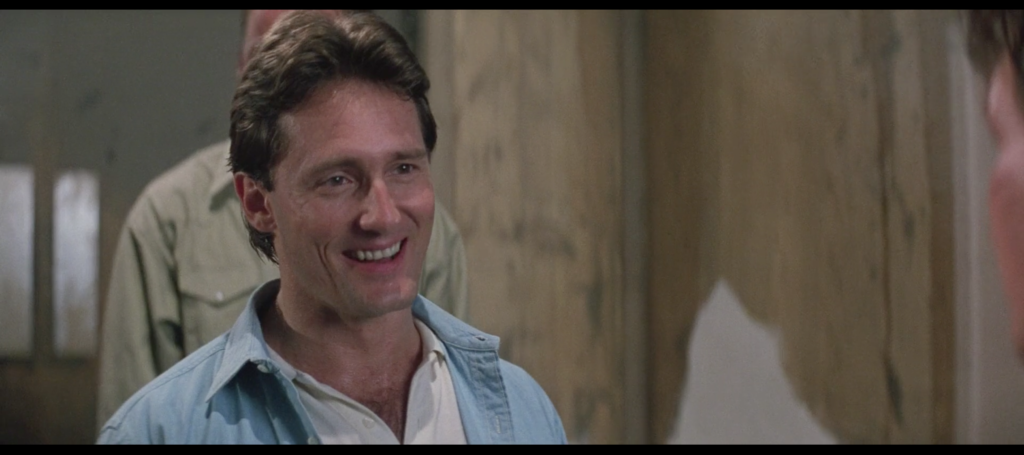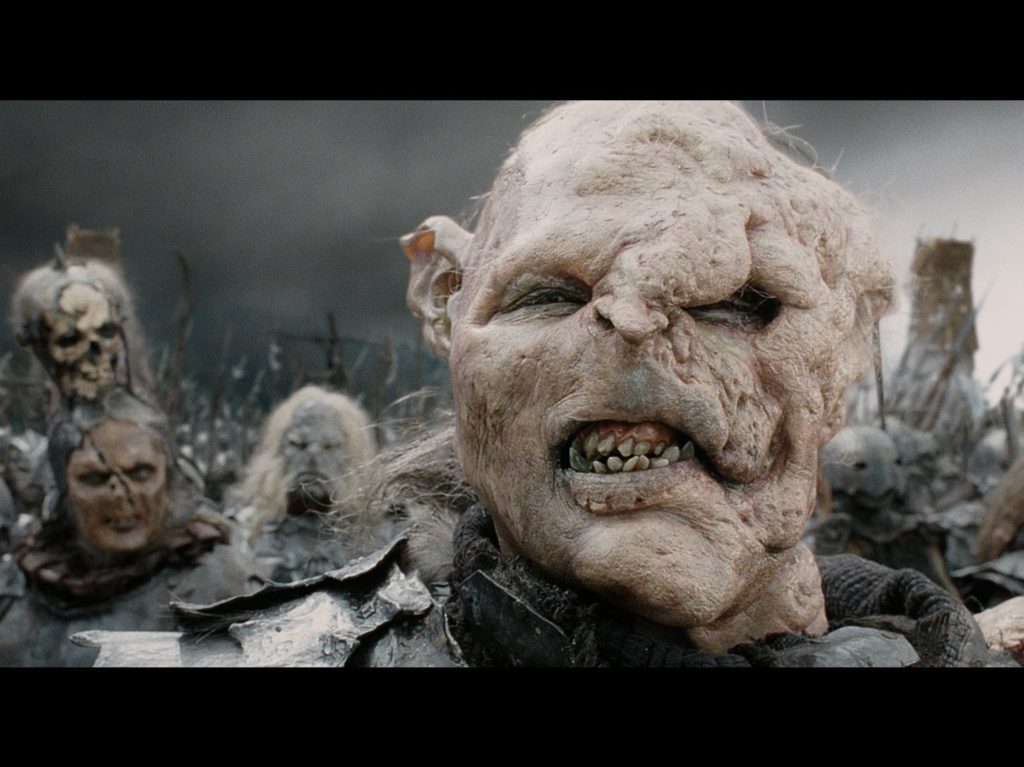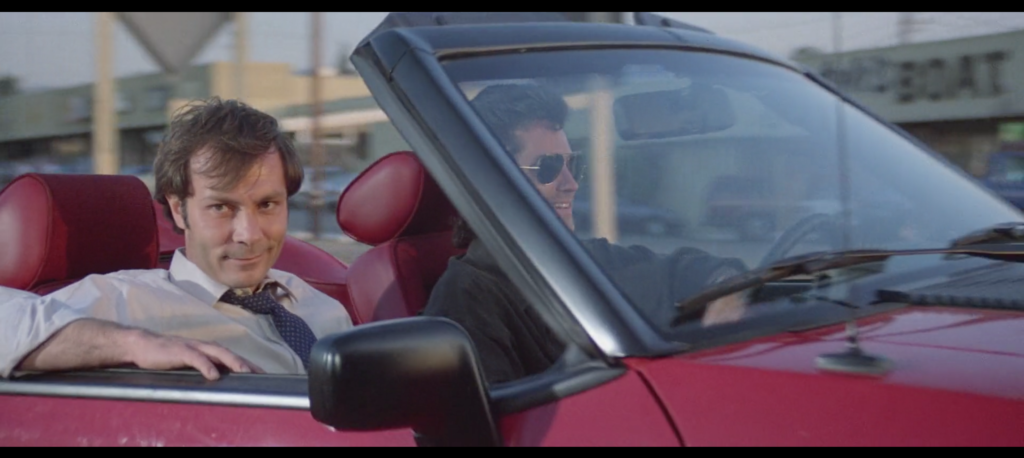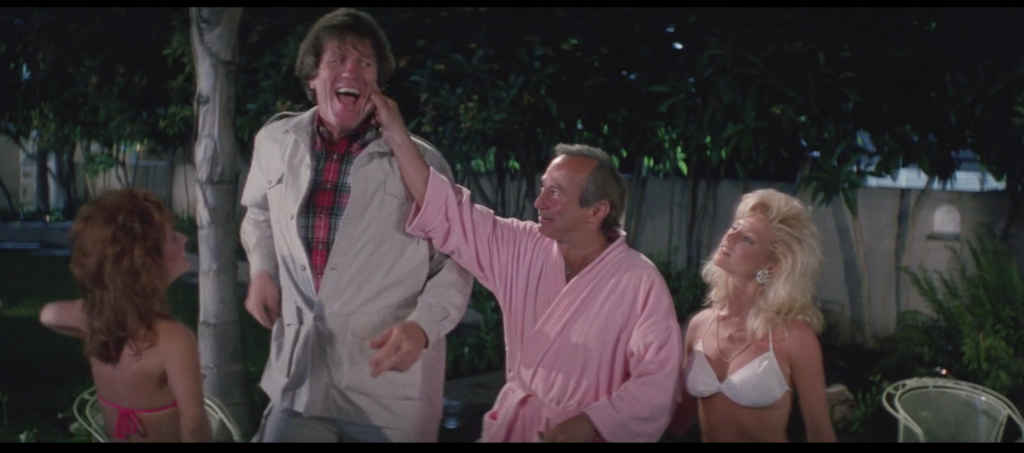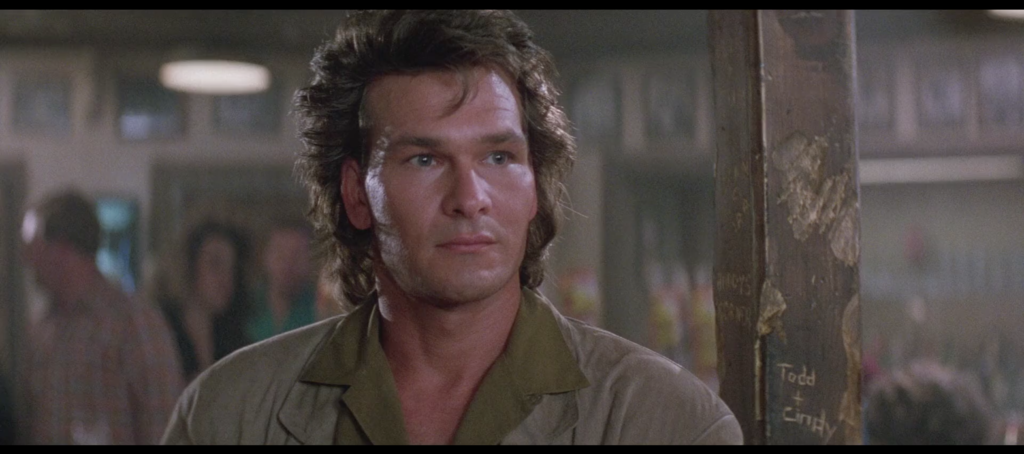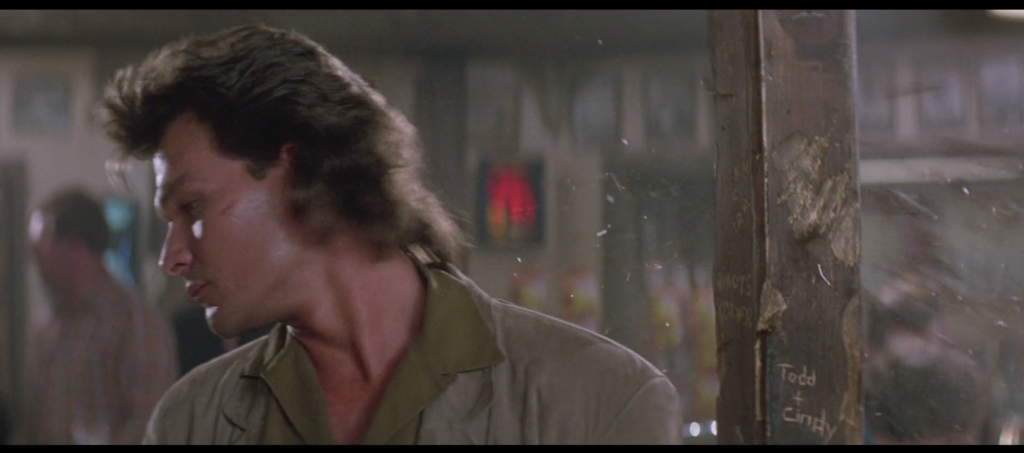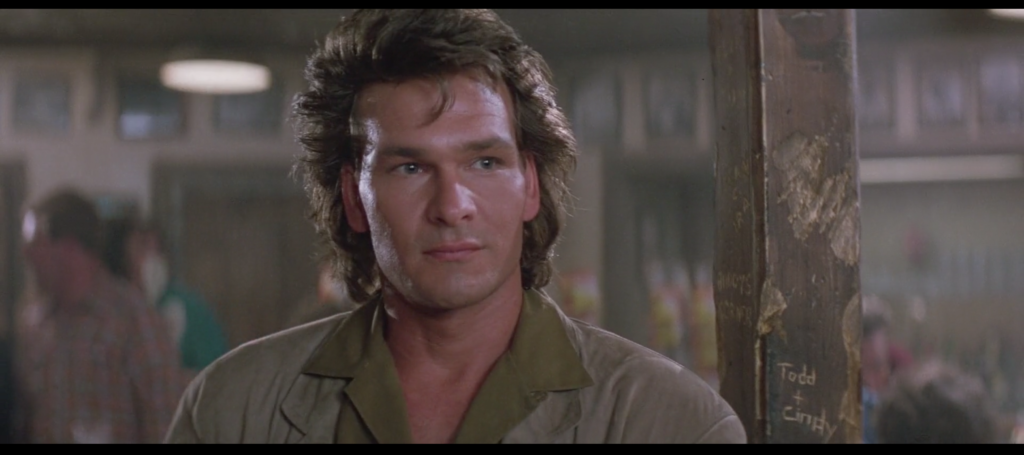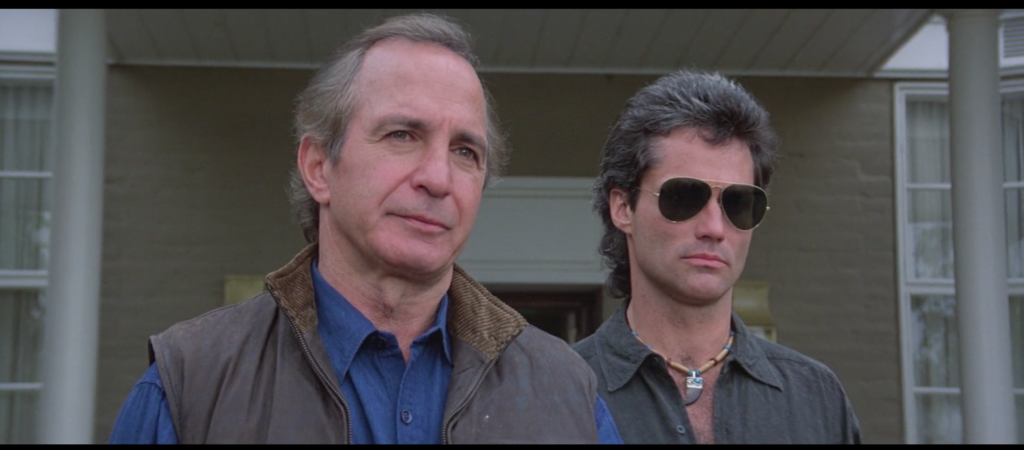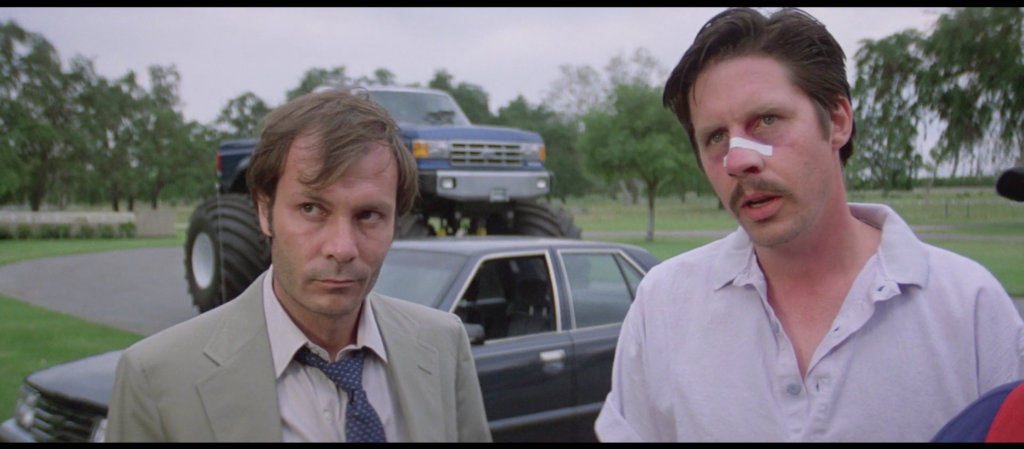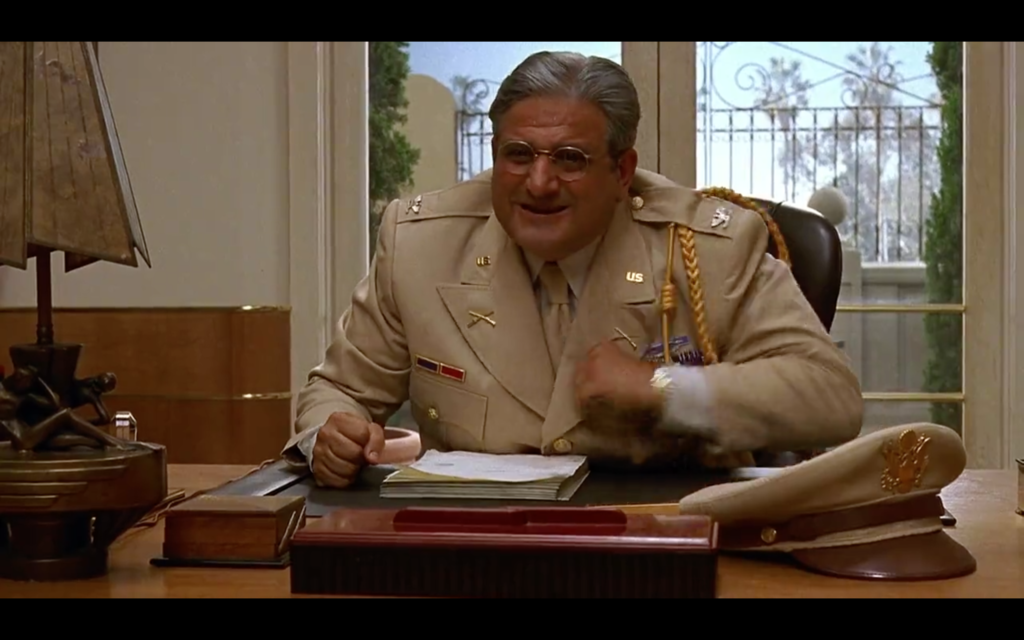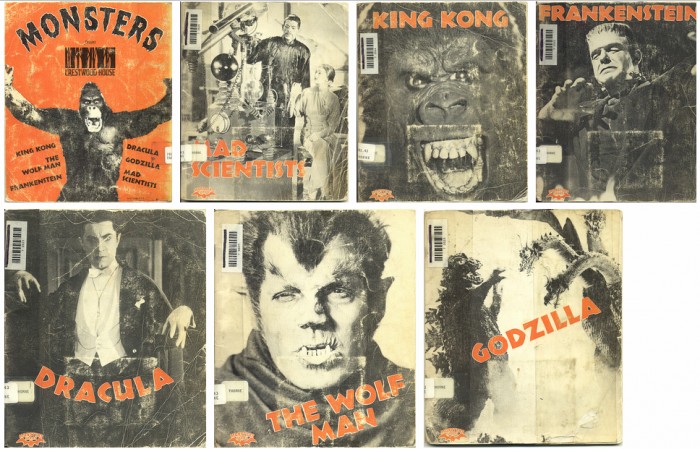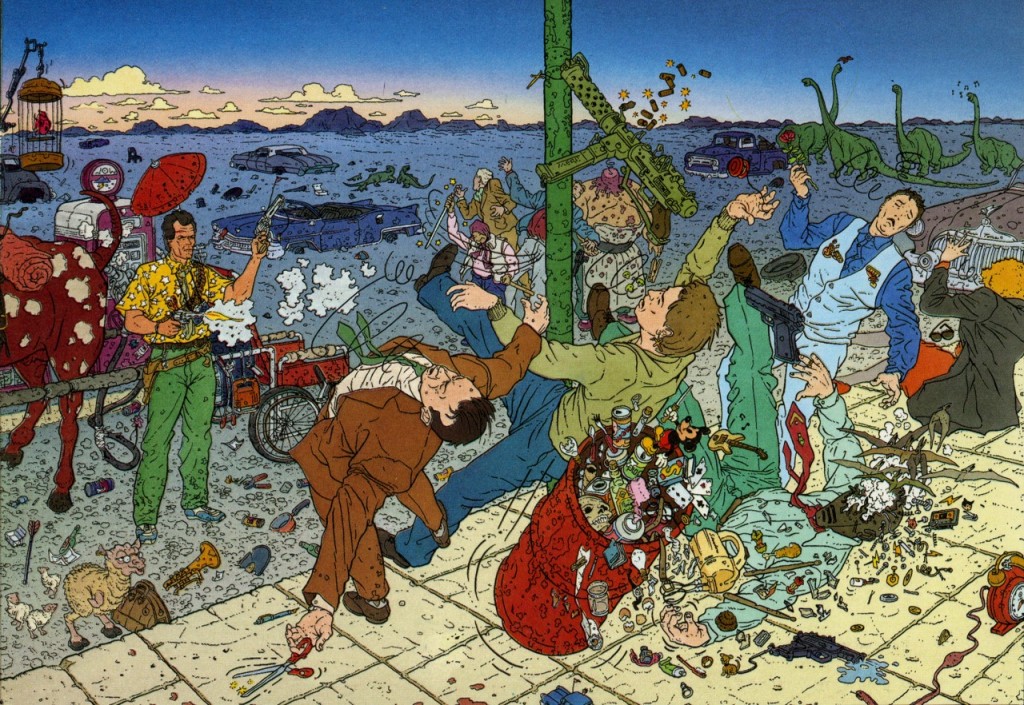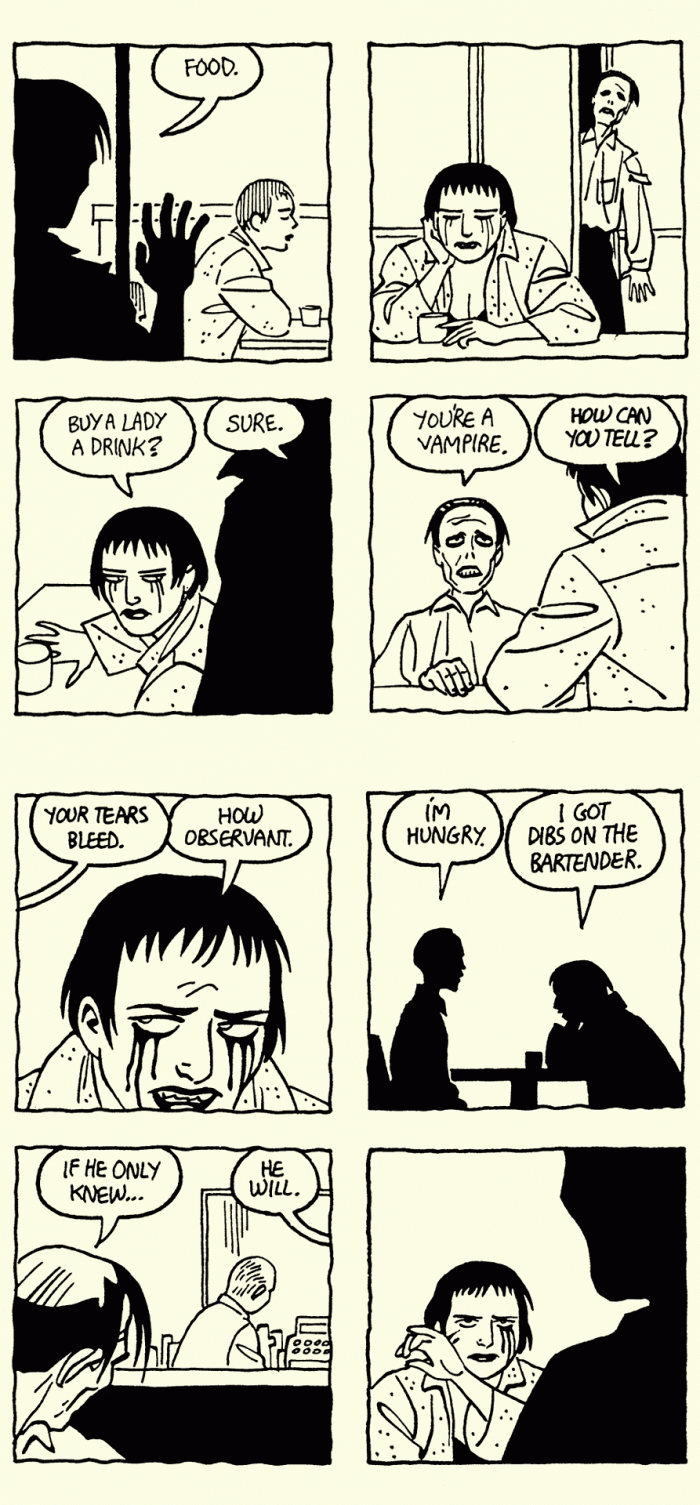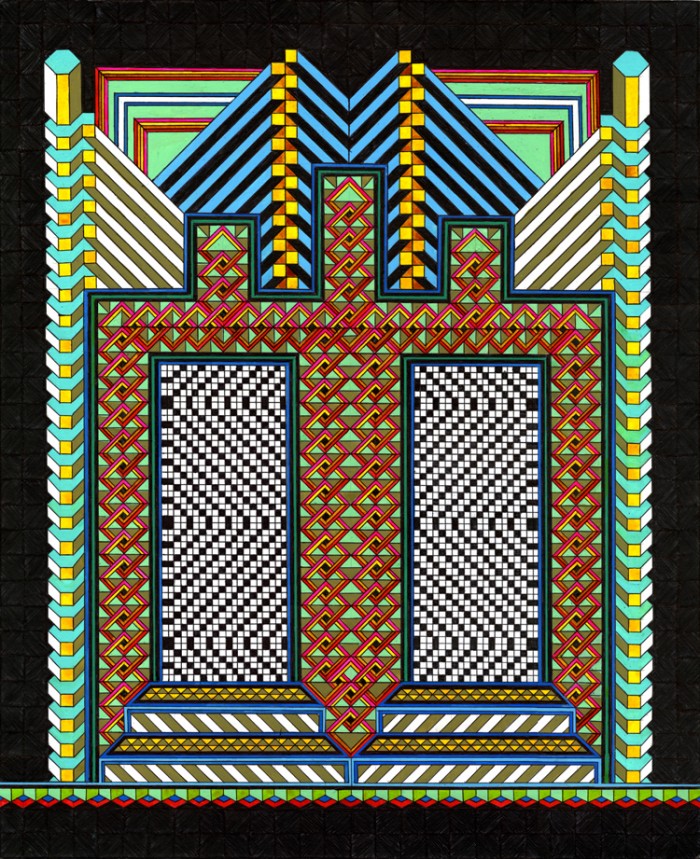Posts Tagged ‘the lord of the rings’
“The Lord of the Rings: The Rings of Power” thoughts, Season One, Episode Three: “Adar”
September 9, 2022I’m trying, as hard as I can, not to let my lifetime of Tolkien readership to affect my judgment of the show, which is its own thing in a very different medium with different structures, strengths, and requirements. But it’s hard! It’s hard because I know how complex and tragic this material can be, and I’m seeing so little of that complexity and tragedy; in its place are a bunch of gritty tough guys and wide-eyed wonder-seekers I don’t recognize, whether their origins are canonical or not. Aside from some really cheesy seafaring sequences everything still looks solid and expensive, but it feels like some vital part of the storytelling and character-building budget was cut. Short of a magic ring, I’m not sure how the show digs itself out of that hole.
I reviewed this week’s episode of The Lord of the Rings: The Rings of Power for Decider.
“The Lord of the Rings: The Rings of Power” Season One, Episode Two thoughts: “Adrift”
September 2, 2022The biggest problem with this episode is evident if you compare it to, like, any other episode of good television. For the most part, stories in prestige TV are driven by character interaction. People encounter one another, have conversations or arguments or fights, emerge on the other side either changed or redoubled in their determination not to change, and the plot proceeds from there. (This is how House of the Dragon works, to cite an obvious point of comparison for this show.)
In this episode, though, written by Breaking Bad and Better Call Saul veteran Gennifer Hutchison of all people, way too many of the scene transitions that propel the narrative are these kind of cheap cliffhangers, in which the action is cut off just before or just after something interesting happens. Arondir gets got by some goblins? Cut! Durin père and Durin fils open a treasure box with a secret MacGuffin inside? Cut! Theo’s blood gets drawn into his obviously evil Sauronic artifact? Cut! Galadriel and Halbard get rescued by the silhouette of an off-camera sailor? Cut!
You could get away with one or even two of these pseudo-suspenseful edits, I guess. But a whole suite of them? It’s not storytelling — it’s a cheat code, the easiest possible way to drive people from one moment (or episode) of the story to the next. I’m surprised it made it out of the writers’ room this way.
I reviewed the second episode of The Rings of Power for Decider.
“The Lord of the Rings: The Rings of Power” Season One, Episode One thoughts: “A Shadow of the Past”
September 1, 2022At this point, I want to state for the record that I am currently covering not only The Lord of the Rings: The Rings of Power and Game of Thrones: House of the Dragon, and in neither case do I feel it’s my job to adjudicate the differences between the books and the shows. The books are the books and the shows are the shows — two different media, two different sets of structures and demands and rewards. Ultimately, what matters is what winds up on screen, and how that comes across to the viewer.
That being said, I must admit that it’s extraordinarily difficult for a person like me — a guy who first read The Hobbit at age 5, who’s seen the LotR movies more times than I can count, who’s read Tolkien’s books to his children multiple times, who has the goddamned White Tree of Gondor tattooed on his arm — to formulate an equal appreciation for the canonical characters and the invented ones. Galadriel and Elrond, and even Finrod and Gil-galad — these are old friends of mine, dating back decades. Arondir and Bronwyn and Theo and Nori? To paraphrase Mariah Carey, I don’t know them.
160. How to Build a Better Goon
June 9, 2019Ketchum is a forgettable goon. That’s just facts. I know who he is because I’ve watched Road House a million times, and you know who he is because you’re reading this series of daily essays about Road House. But it took me a long, long time, and many, many viewings, to put Ketchum together, as it were: that he drives the monster truck any time it shows up; that he’s the guy who tries to kick Dalton in the head with the knife in his boot and gets his ass kicked instead; that he’s the man who kills Wade Garrett, as evidenced by his retrieval of the knife used to kill him and insertion of that knife into a custom sheath on his hip; that he’s the last goon to tangle with Dalton hand to hand; that his name is Ketchum.
Alone among the goons present for the climax of the film, no one even says his name in the movie, a privilege afforded to Pat McGurn, Morgan, O’Connor, Tinker, and Jimmy. I’ve made a fuss about this over the past few months, alleging that it’s one of the reasons he’s so forgettable. But I’ve been thinking about that assertion lately, because I don’t think it has to be that way.
Consider the orcs.
Remember these handsome fellas? Sure you do. That’s Lurtz, Grishnakh, and Gothmog, from Peter Jackson’s Lord of the Rings trilogy. No one says their names in the movies. No one says any orc’s name in the movies. For that matter, Lurtz is a made-up name for a brand-new character the filmmakers introduced, and Gothmog is simply their best guess as to what a Mordor commander from the books whose species isn’t even specified by Tolkien might be like.
But if you’ve watched those movies recently, or if you find them memorable at all, you probably recall them as the uruk-hai leader with the Ariana Grande hairstyle whose head gets chopped off by Aragorn after a big fight, the raspy-voiced weasel who tries to hunt and kill Merry and Pippin before Treebeard squishes him, and the leader of the orc assault on Minas Tirith with the big puffy pink face. You remember how they look, how they sound, and what they do, because Jackson and company made a big point of giving them memorable introductions, isolating them with distinct camerawork (closeups, angles, whatever the case), and having them do their most memorable stuff right there for all to see. Lurtz was created to give the uruk-hai chasing the Fellowship a distinctive leadership figure so the film’s climax would work as such. It’s a far cry from the aggressively nondescript Ketchum first showing up as a non-speaking background character wearing face-masking sunglasses during the Bleeder scene and eventually killing Road House‘s secondary protagonist off-screen.
For that matter, it’s a far cry from these fellows.
Karpis and Mountain are also never named. They’re only shown in close-up in couple of scenes apiece; in Mountain’s case, one of those scenes is a pool party (in which Karpis appears in the background). Neither of them make it to the film’s final reel but it’s not because they get killed—they simply stop showing up, because that’s how Road House rolls.
But you remember them, right? They each have a distinctive look, with Karpis’s clothes from the Bun E. Carlos collection and Mountain’s sheer size. They each do something interesting: Karpis stares down Dalton, and Mountain dances like an idiot and later Sam Elliott tells him “I sure ain’t gonna show you my dick” before taking him down. The camera makes a point of both of them: Karpis stares right into it in closeup, while Mountain becomes the focal point as it follows Wesley and Denise into the pool party.
When it comes to differentiating your goons, bothering to say their name during the film helps, especially if you name half a dozen comparable characters during the film and run the risk of drowning the unnamed one out. (That doesn’t apply to LotR.) But you need the look, you need a distinctive action, and you need a memorable trick with the camera to make the look and the action click in the viewer’s mind. It’s a bit unfair to compare Rowdy Herrington’s work with Ketchum to Peter Jackson’s work in The Lord of the Rings, which is better at this than any other film I’ve ever seen. My point is simply, what’s in a name?
080. Dodge
March 21, 2019
If there’s anything else in the history of action cinema I’ve studied with the same open-hearted intensity I’ve applied to Road House, it’s the Tomb of Balin/Bridge of Khazad-dûm sequence from Peter Jackson’s The Fellowship of the Ring. Back in the summer of 2001, in the Before Times, I was invited by New Line Cinema in my capacity as assistant editor of the Abercrombie & Fitch Quarterly, my first real job out of college (see what I mean about the Before Times?) to watch the 20 minutes or so of footage from Jackson’s first Lord of the Rings movie that had been publicly screened, initially some weeks prior at the Cannes Film Festival. Wisely the studio had selected the film’s first real action setpiece, the slobberknocker with the orcs and the cave troll in Balin’s Tomb and the flight down the crumbling staircase afterwards. Any doubts I might have harbored about the ability of Jackson, a filmmaker whom I loved for Heavenly Creatures but wasn’t sure could tamp down his manic style for Tolkien’s world, evaporated the moment the fighting began. This was a director who understood that effective action is shaped by the environment in which it’s staged, with easily understandable physical stakes for the success and failure of each blow and maneuver, relayed through camerawork that allows the eye to parse the spatial relationships between the combatants.
What’s more, and the friend I brought along with me as my plus-one to the screening room is the one who pointed this out, Jackson understood that the key to fantasy as a genre is scale, intuiting George R.R. Martin’s much-quoted dictum that we turn to fantasy “to find the colors again,” to transcend drab reality on (paraphrasing here) the wings of Icarus rather than Southwest Airlines. Neither Jackson nor Martin (nor Tolkien, nor Benioff & Weiss for that matter) felt this meant completely detaching the material from reality; on the contrary, the punishing realism of Martin’s setting and the painstaking detail of the Weta Workshop’s worldbuilding made the truly massive scope of the landmarks and lives of Westeros and Middle-earth all the more convincing.
I’ve told this story many times now, but it was specifically one of the Moria sequence’s action beats that brought this home to me. As the Fellowship flees down those gigantic, precarious stairs, orcs begin pelting them with arrows. Legolas, the Elven archer, turns and fires back at one of the distant foes. The camera travels as if mounted on the shaft, giving us an arrow’s eye view of the cave and the evil creature on the opposite end towards whom it is racing. A cut at the moment of impact switches us to a view of the same cavern from just behind and above the orc (by now struck right between the eyes and plummeting into the abyss below), angled downward toward the Fellowship on the stairs hundreds of yards away. The arrow’s flight, and our flight along with it, describes that vast space in a way a more traditional establishing shot could not. If we’d started with that over-the-shoulder shot looking down at the Fellowship we’d have gotten the picture I suppose, but we wouldn’t have been made to feel the space, the scale, the awe.
Whether to reserve the sight of the Balrog for the eventual filmgoing public or because that sight had not yet been completed I can’t recall, but the preview cut off with our final glimpse of the Fellowship escaping the stairs. The chase across the Bridge, the standoff between Gandalf and the Balrog, Gandalf’s triumph and fall, and the Fellowship’s mournful escape had to wait until the premiere. But there’s another moment with an arrow that stuck with me then and still does today. As Aragorn, the last one out of the Mines, looks back at the chasm, the rain of arrows from the orcs, who’d given the Balrog a wide berth, resumes. Viggo Mortensen, an amazing proficient action performer for a guy who had about a week of instruction before his first on-camera swordfight compared to the rest of the cast’s extensive training camp, had clearly been instructed by Jackson to act as though he was dodging arrows that were added digitally after the fact. Like a particularly generous pro wrestler he sold the hell out of it, at one point ducking so dramatically it’s like he was avoiding some big galoot’s haymaker. The desultory choreography of the move jumps out at me because Mortensen’s Aragorn is otherwise a model of physical efficiency in his fighting style, as befits a man who’s been hunted all his life and has learned that excess movement can mean the difference from ending a fight merely exhausted and ending a fight dead. It’s taken me time to come around to it but I now recognize it as the right approach for a character who’s been momentarily poleaxed by a grief he never believed he’d experience.
Anyway, at one point during the big bar-destroying fight that breaks out in Road House when a man squeezes another man’s wife’s tits without paying to kiss them as he’d appeared to agree to do, a stray bottle comes flying in Dalton’s direction and shatters against the post next to which he’s been standing and taking in the scene, and he dodges it and resumes watching in less time than it took either of the arrows described above to do their thing. This doesn’t tell us anything about the scale of the Double Deuce, the spatial relationship between Dalton and the unseen bottle-thrower, the nature of the world in which the film takes place, the emotional state of the characters, or the approach of director Rowdy Herrington toward the material. It just tells us that Dalton is so good at dodging broken glass that it doesn’t even disturb his spit-curl. And that’s all you need to know, son.
030. “My only sister’s son”
January 30, 2019“I name Éomer my sister-son to be my heir.”—Théoden, The Lord of the Rings
“He’s my only sister’s son, and if he doesn’t have me, who’s he got?”—Brad Wesley, Road House
Not even I, a person with the White Tree of Gondor tattooed on my arm who is writing an essay about Road House every day for a year, can come up with much of a connection between the King of Rohan and the Chief Job Creator of Jasper, Missouri beyond the antiquated syntax with which they refer to their nephews, Éomer son of Éomund and Pat McGurn respectively. Wesley isn’t about to name his mustachioed kinsman his successor anytime soon, certainly. “Pat’s got a weak constitution, you boys know that,” he tells his assembled henchmen after two of their number, Tinker and O’Connor, failed to forcibly reinstate Pat in his old gig at the Double Deuce during one of the Knife Nerd incidents. “That’s why he’s working as a bartender.” Poor Pat, not even fit for full-time goonmanship.
Pat isn’t even present to hear this condescension, having slunk shamefacedly into Uncle Brad’s mansion at the first opportunity, allowing his comrades-in-goon to take the heat. Why should he bother sticking around? He knows his place, and it’s not at his uncle’s side. It’s Jimmy, Wesley’s strong right hand and, in my considered opinion, secret bastard son who’s the heir apparent. “I should have let you go, Jimmy,” Wesley says regarding the failed mission, an avuncular (fatherly?) hand on the back of the younger man’s neck. Better for Pat to spare himself the sight.
So no, Wesley’s rhetorical style here doesn’t remind me of Théoden King. Rather, I’m put in mind of another great man.
Jack Lipnick is the head of Capitol Pictures, the studio that hires a certain New York playwright to give a Wallace Beery wrestling picture That Barton Fink Feeling. Like Brad Wesley, he came up the hard way (“I mean, I’m from New York myself. Well, Minsk, if you wanna go all the way back—which we won’t, if you don’t mind, and I ain’t asking”) and rose to prominence and power by exerting control over the local economy, largely by screwing other business owners out of their share (regarding his assistant Lou Breeze: “Used to have shares in the company. Ownership interest. Got bought out in the Twenties. Muscled out, according to some. Hell, according to me”).
The tone Lipnick adopts when speaking about producer Ben Geisler, whom he fires instead of Barton when the latter screws up, sounds familiar. “That man had a heart as big as the all outdoors, and you fucked him!” he says, voice soaring as if with the eagles as he describes the generosity of spirit found in a guy he shitcanned, then cracking like a whip as he drops the f-bomb on the person truly at fault, at least in his eyes.
Though he prefers physical assault to firings, Brad Wesley reacts in similar fashion over his sister-son’s plight, arbitrarily beating his goon O’Connor unconscious for, alternately, being untruthful, unable to admit he was wrong, weak, unable to tolerate pain, cowardly and above all prone to bleeding. O’Connor’s failure regarding Pat may have occasioned the beating, but it isn’t even mentioned during the beating itself as one of Wesley’s half-dozen reasons for inflicting it.
For men like Wesley and Lipnick, people are worth caring about only to the extent that doing so, or pretending to do so, enables them to torment others on their nominal behalf. These men, like their words, are overinflated and empty. The overwrought sentiment intended to conceal the lie reveals it instead.
Delete Your Account, Episode 49.5: The Culture Industry
May 26, 2017I’m quite pleased to say I was the guest on this week’s subscriber-only edition of the leftist podcast Delete Your Account! Basically, host Kumars Salehi and I are both unhappy with how various factions of the Left talk about art these days, so we tried to come up with a left-wing discussion of politics and pop culture that won’t make you want to kill yourself. We cover Game of Thrones, The Lord of the Rings, The Walking Dead, prestige TV, horror, the Four Worst Types of TV Critics, and more. It’s for Patreon subscriber’s only, so smash that motherfuckin subscribe button and give it a listen!
The arrow that made me love The Lord of the Rings
June 26, 2014On my A Song of Ice and Fire tumblr boiledleather.com the other day, a reader asked me:
I’m sure that someone has asked this before, but what are your thoughts on Peter Jackson’s Lord of the Rings-adaptations? Especially compared to Game of Thrones (different medium, I know, but still).
In May of 2001 I received an invitation through my job as associate editor of the A&F Quarterly (“the lifestyle publication” of Abercrombie & Fitch) to a screening of the 20 minutes or so of footage of the then-unreleased The Fellowship of the Ring that had screened at Cannes. This was from the Mines of Moria sequence — the discovery of Balin’s tomb, the fight with the cave troll, and the flight down the stairs. It was obviously crackerjack action filmmaking, but I’ll tell you what really hit me the hardest. As the Fellowship flees down that first flight of stairs, orc arrows start raining down on them, bouncing off the stone steps. Legolas turns and returns fire, and the camera gives us an arrow’s-eye-view of its flight across the chasm and into the forehead of an orc archer. At the moment of impact the camera cuts to a shot just above and behind the orc’s shoulder as he falls from his perch into the pit below, and suddenly we can see the enormous distance we’d just traveled on the head of that arrow. Fresh from film school as I was, I was blown away by this. Peter Jackson had used the flight of the arrow to describe the space it was shot in, using its physical movement to convey a sense of scale to us that would not have been possible if he’d simply cut back and forth between the vantage points. This of course is what all action sequences in visual media ought to do — root you in an environment, use the action beats to move you around in that environment, give as many beats as possible palpable physical stakes you can grasp and contextualize immediately. It also showed that Jackson was going to use the full force of the cinematic medium to tell this story — he wasn’t just going to line up a bunch of CGI critters and throw them at one another, nor was he going to whirl and twirl haphazardly, he was going to paint the story with the camera and the editing bay like brushes. It showed that the soon-to-be-legendary attention to detail he and the Weta team paid to every prop and set and costume had a storytelling purpose as well, that a bow and arrow and a stone chasm and a hero-orc makeup job would not just look cool but help us understand where we were and what kind of world it was and why it mattered. Finally, it showed that for the first time ever, a fantasy film was actually going to capture the scale of epic fantasy, the sheer physical awe-someness of it all above and beyond the striking images that plenty of fantasy films before it had dealt in without that ability to convincingly situate them in a world as large as our imaginations. Not a single moment in the entire trilogy contradicted these initial impressions. They’re magnificent films and I love them to pieces.
Vorpalizing
September 3, 2013At Vorpalizer, I wrote about the Crestwood House monster book series, Geof Darrow’s The East Meets West Portfolio, and Ralph Bakshi’s The Lord of the Rings.
Friday night with Vorpalizer
June 7, 2013Over the past couple of weeks I’ve written about Memory Palaces by Edie Fake, “The Sea-Bell, or Frodo’s Dreme” by J.R.R. Tolkien, “The Ghoul Man” by Jaime Hernandez, and “The Cask of Amontillado” by Edgar Allan Poe for Vorpalizer. Check them out.

